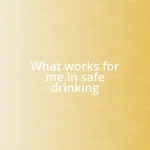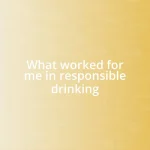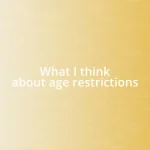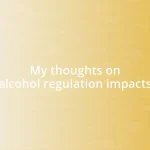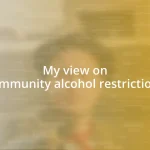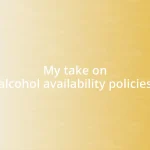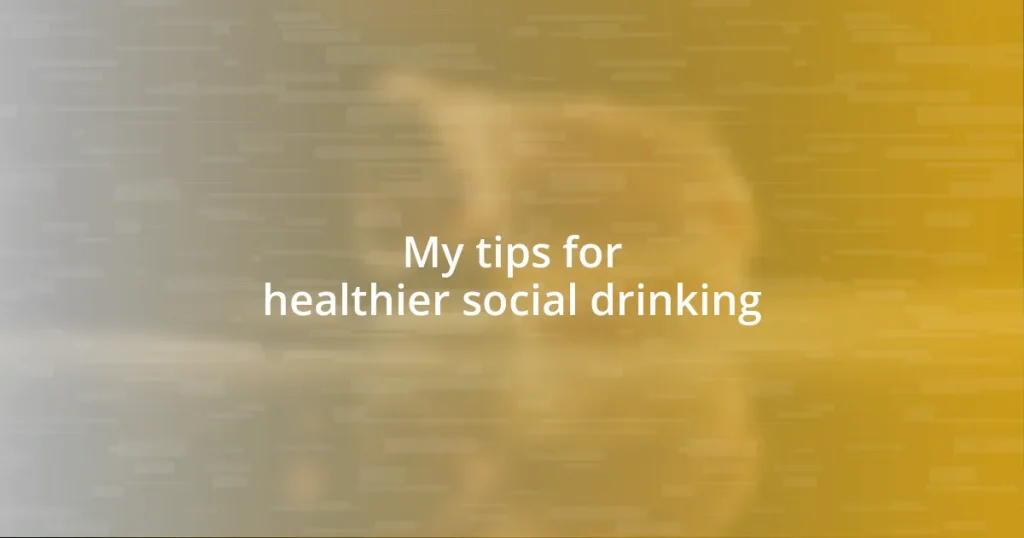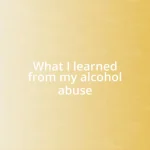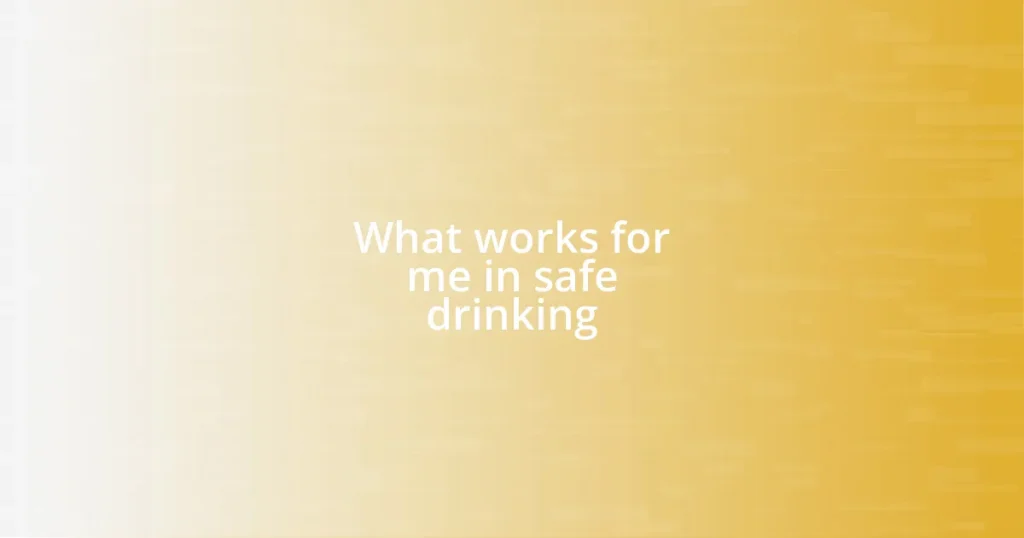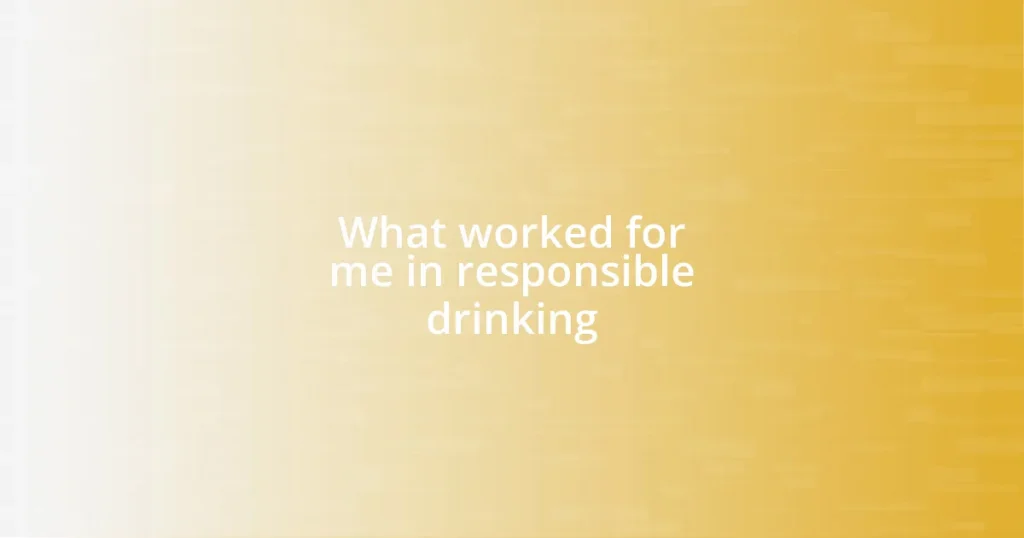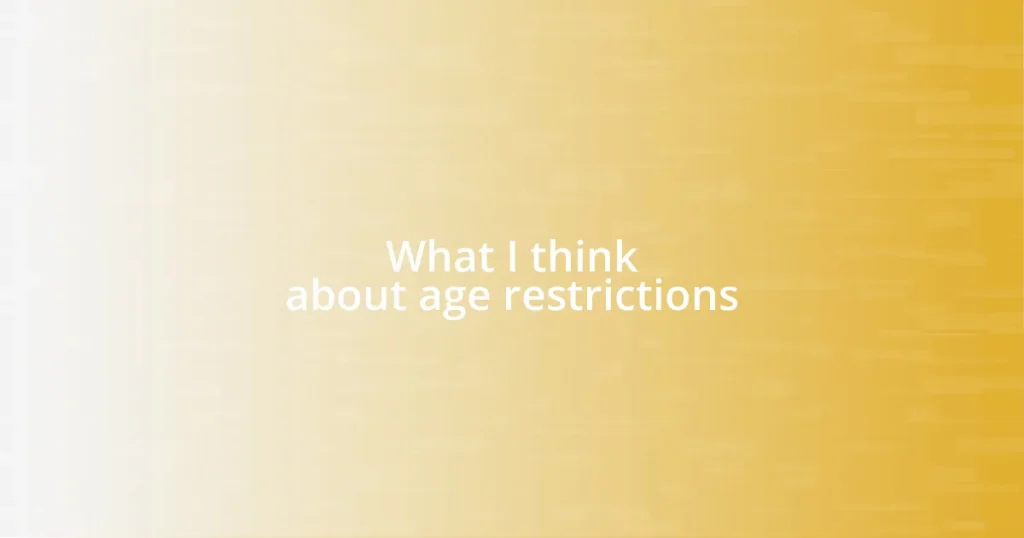Key takeaways:
- Social drinking can often lead to overindulgence due to peer pressure, highlighting the need for self-reflection on personal drinking habits.
- Healthier drinking options, like wine spritzers and light beers, can enhance social experiences while reducing calories and alcohol intake.
- Setting clear personal drinking limits before social events helps maintain control and promote a positive experience without regret.
- Building a supportive drinking culture involves encouraging alternative options and fostering open discussions about alcohol choices among friends.
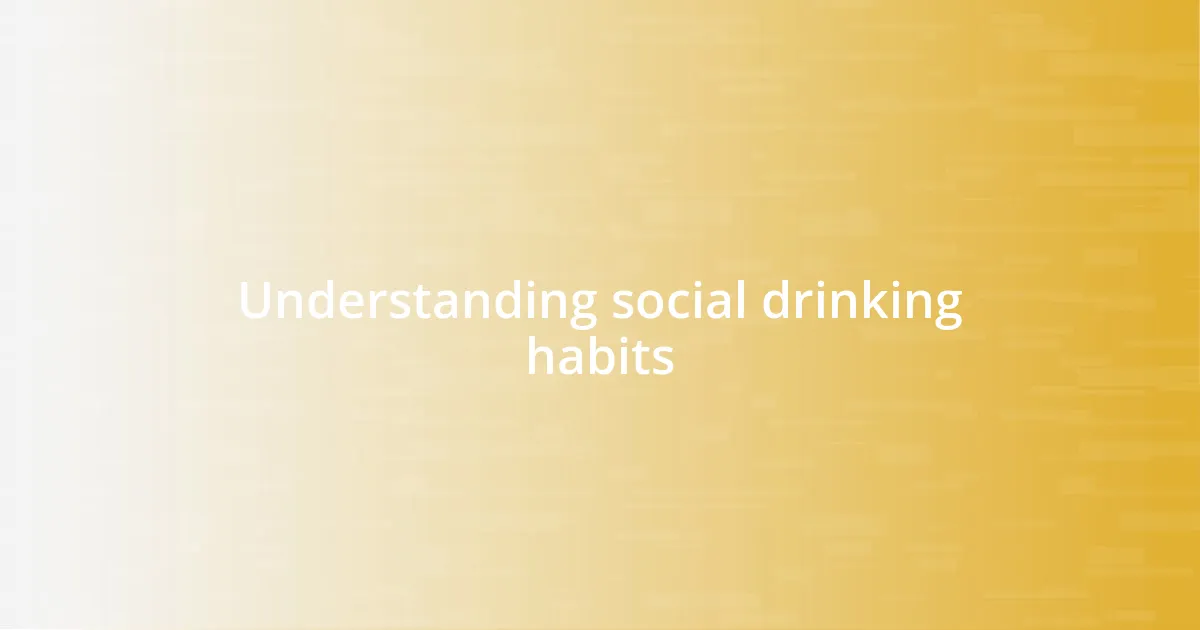
Understanding social drinking habits
Social drinking often serves as a bonding experience among friends and family. I remember a gathering where we toasted to milestones, laughter filling the room. That sense of connection over a glass of wine was palpable, yet I couldn’t help but wonder—how often do we drink simply because everyone else is?
For many, drinking in social settings feels like an expected part of the routine, almost a rite of passage. I once found myself at a party where the pressure to fit in led me to drink more than I intended. Is it possible that we sometimes prioritize social acceptance over our own comfort? It’s a thought that lingers for me even now.
Understanding our drinking habits requires honest reflection. I’ve learned that some events feel genuinely festive, while others might just be an excuse to drink. What do you think drives your own choices in social situations? I often ask myself this to recognize when I’m drinking to enjoy the moment versus simply going along with the crowd.
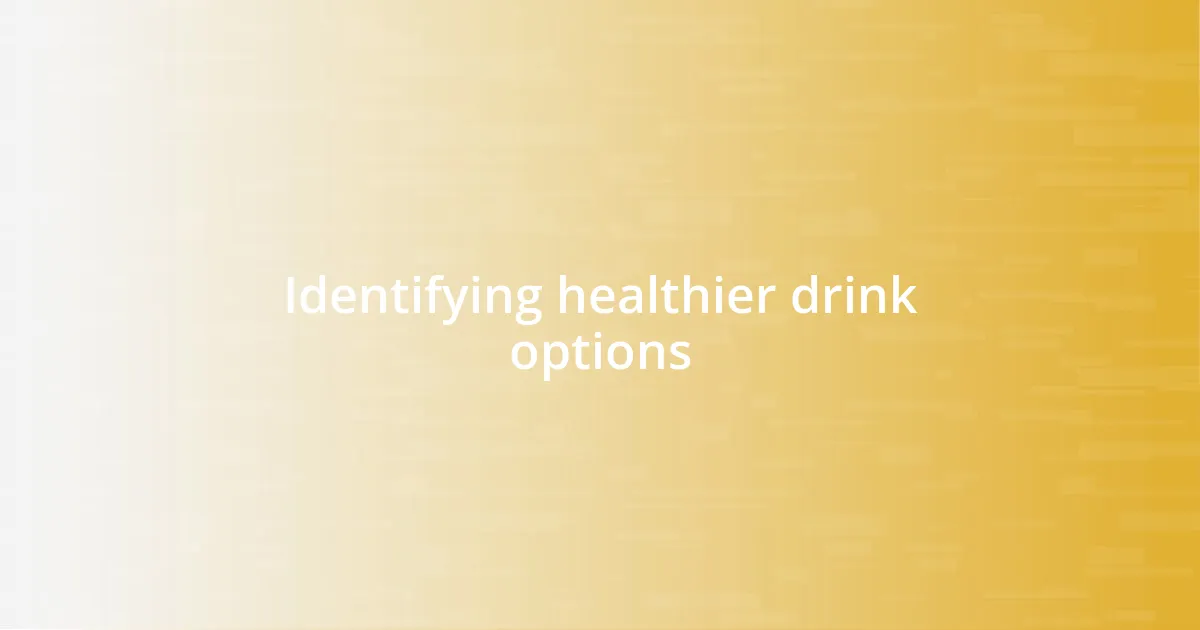
Identifying healthier drink options
When it comes to healthier drink options, the choices can be surprisingly rewarding. I’ve switched to lighter beverages in social settings, and it’s fascinating how much they can still contribute to the fun ambiance. For instance, I’ve found that a spritzer made with wine and soda water not only feels celebratory but cuts down on calories and alcohol content.
Here are some drinks that I consider healthier options:
- Light Beers: Lower in calories and alcohol.
- Wine Spritzers: A refreshing mix of wine and sparkling water.
- Mojito with Extra Mint: Made with less sugar, it still packs a flavor punch.
- Infused Water Cocktails: These provide hydration while adding a hint of fruit flavor.
- Low-Calorie Seltzers: Many brands offer flavored options that are fun and guilt-free.
These alternatives allow me to enjoy the company without overindulging, ultimately fostering a more mindful drinking experience.
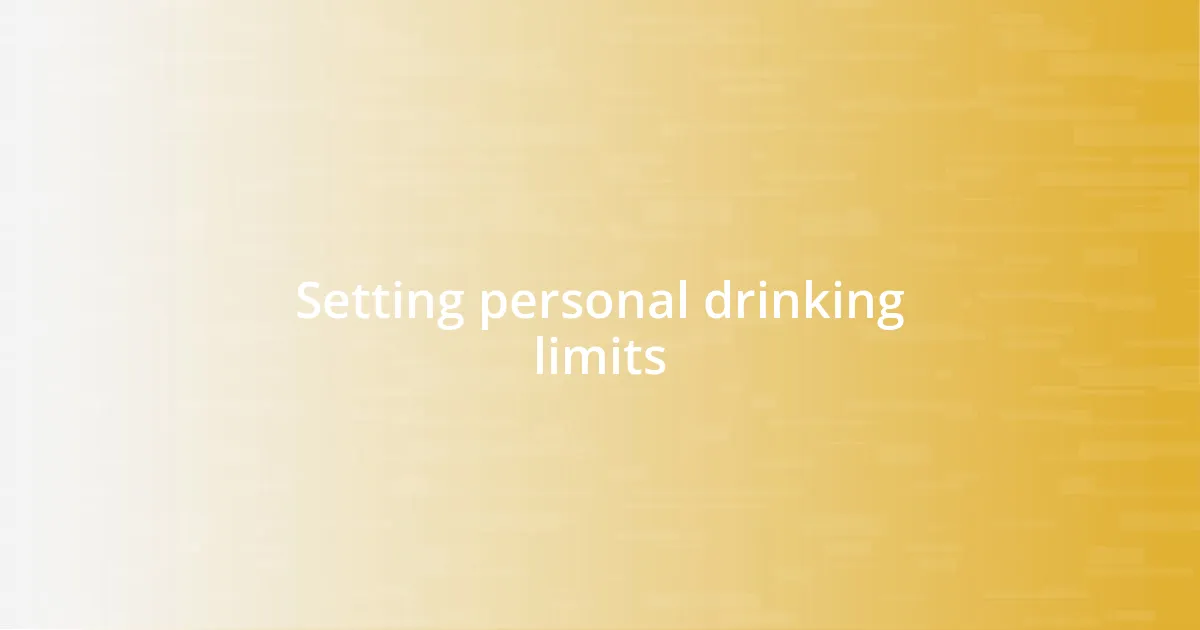
Setting personal drinking limits
Setting personal drinking limits is essential for fostering a healthier relationship with alcohol. I remember a night out with friends where the excitement led me to lose track of my intake. Setting a clear limit before stepping out helped me enjoy the evening while still feeling in control and vibrant by the end.
It’s important to create a personal strategy for managing how much you drink. I often set a specific number of drinks before the event starts, which has allowed me to navigate tempting situations with ease. This technique not only gives me goal to aim for but also prevents the all-too-common scenario where one drink leads to another without thought.
Take the time to reflect on what your limit should be based on your lifestyle and how alcohol affects you personally. I’ve found that my ideal limit varies depending on the occasion and my mood. It’s this awareness that has transformed my social experiences, turning them into joyful occasions rather than overindulgent nights that leave me feeling regretful.
| Setting Personal Limits | Consequences of Not Setting Limits |
|---|---|
| Increased enjoyment of social interactions | Feeling disconnected or overwhelmed |
| Maintaining control and confidence | Loss of energy and clarity |
| Ability to choose healthier options | Risk of unhealthy decision-making |
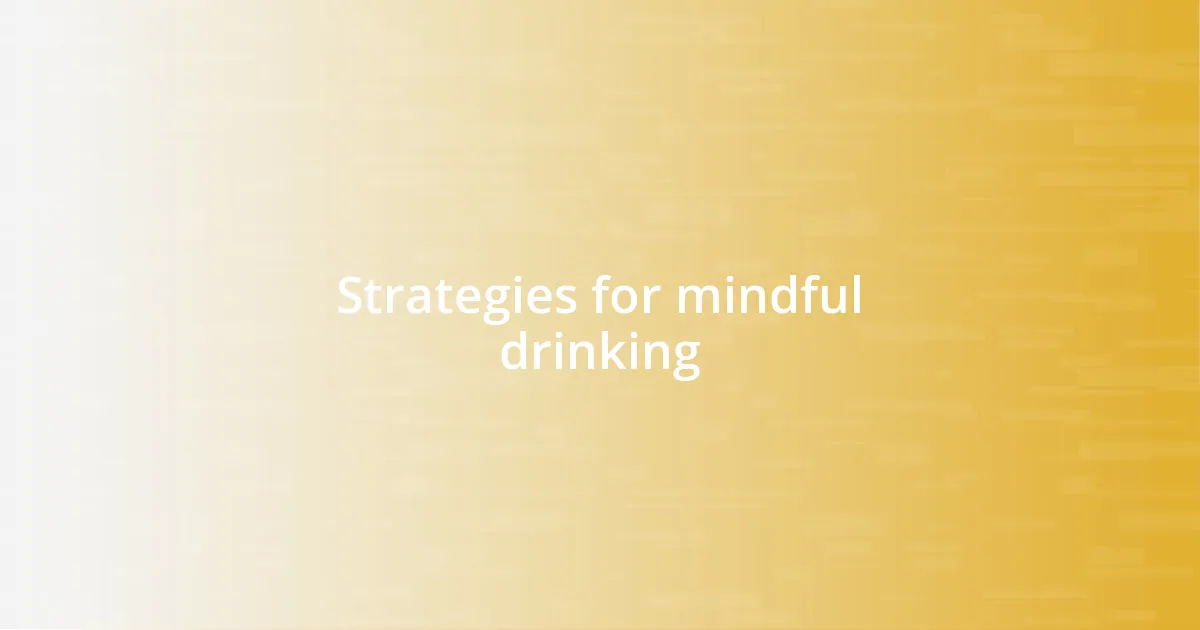
Strategies for mindful drinking
One strategy I’ve found particularly effective for mindful drinking is staying hydrated. I always keep a glass of water in hand while socializing; it not only helps manage my alcohol intake but also keeps me feeling refreshed. Have you ever noticed how easy it is to forget to drink water in a lively atmosphere? I think of it as a little insurance policy for feeling good the next day.
Another approach involves choosing your drinking pace thoughtfully. I often pick a slow-paced drink, like a mojito, and savor it during conversations. This approach not only enhances my enjoyment but also prevents me from continually reaching for another drink. It’s amazing how much more a single cocktail can be appreciated when taken slowly.
Finally, I’ve found that being intentional about the social environment can significantly influence my alcohol consumption. If I’m at a party, I tend to gravitate towards spaces where engaging conversations are happening rather than just being swept away by the crowd’s energy. I ask myself, what kind of experience do I want to foster? I’ve realized that surrounding myself with mindful drinkers often supports my own goals, creating an atmosphere that encourages lighter choices and deeper connections.
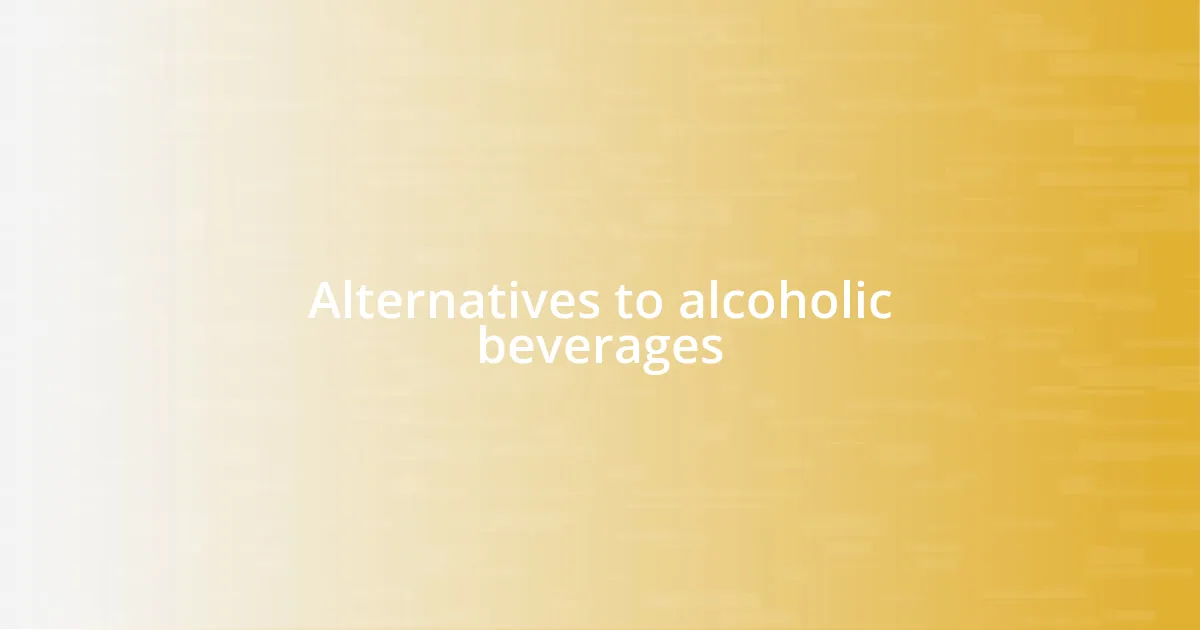
Alternatives to alcoholic beverages
Finding enjoyable alternatives to alcoholic beverages has become a personal endeavor for me. I’ve embraced mocktails, those creative non-alcoholic drinks that mimic the experience of sipping something sophisticated. The other night, I ordered a cranberry and ginger fizz at a bar, and honestly, it felt just as festive as any cocktail. Have you ever tried a beautifully crafted mocktail? It’s incredible how much flavor and flair can come without the buzz.
Sparkling water has also become my go-to substitute when I want to keep it simple yet refreshing. I remember attending a wedding where everyone seemed to be toasting with champagne, and I opted for a sparkling water with a slice of lime instead. The bubbles made me feel just as celebratory, and I enjoyed the evening without worrying about excessive alcohol. This little switch has helped me stay socially engaged while prioritizing my well-being.
Another delightful alternative I’ve discovered is herbal tea, enjoyed hot or iced depending on the occasion. Imagine sitting around a fire pit with friends, and instead of a drink, you’re sipping on a calming lavender hibiscus blend. It adds a cozy element to social gatherings, fostering warmth and conversation without the side effects of alcohol. Isn’t it refreshing to explore options that make us feel good while also creating beautiful shared moments?
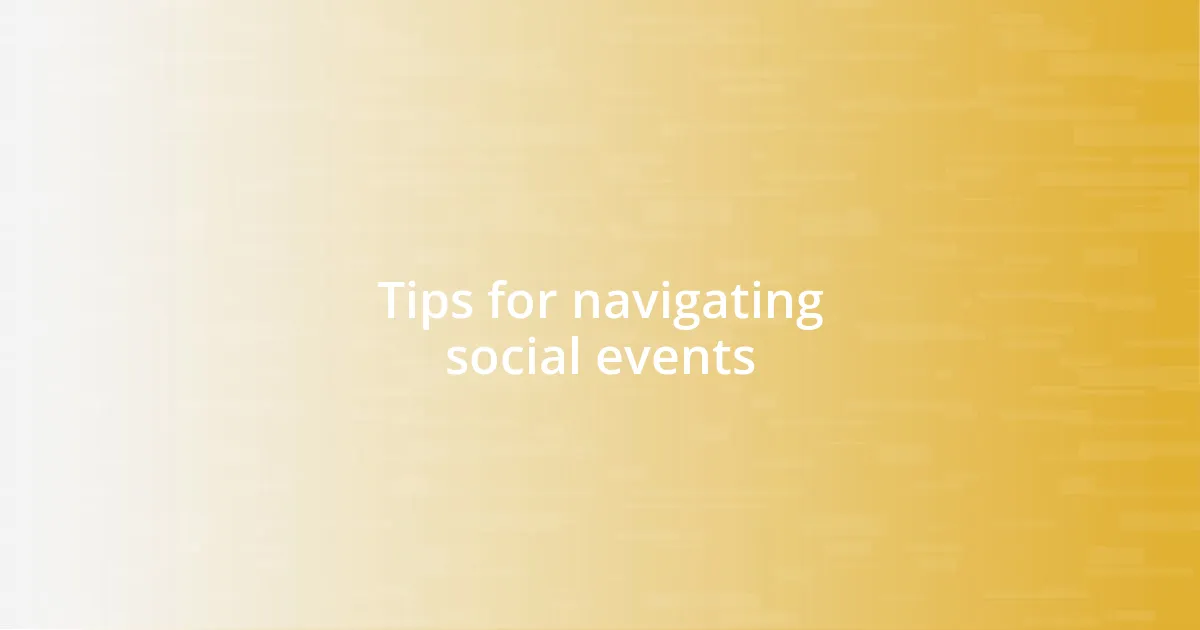
Tips for navigating social events
When I navigate social events, I find it helpful to set personal boundaries around drinking before I arrive. One time, at a New Year’s Eve party, I decided in advance to limit myself to two drinks. This simple commitment helped steer my choices and prevented me from being swept away by the surrounding excitement—doesn’t it feel empowering to take control of our habits in lively settings?
Another strategy I employ is creating a game plan with a buddy. I remember a night out where my friend and I agreed to watch out for each other’s beverage choices. This partnership didn’t just keep me accountable; it also sparked some of the best conversations of the night. Have you ever found that a supportive friend can turn what could be a tricky situation into a fun experience?
Lastly, I’ve learned to embrace activities that don’t center around drinking. At a recent gathering, rather than heading straight for the bar, I joined a group engaged in a lively board game. The laughter and camaraderie filled my evening with joy, making me forget about alcohol altogether. Isn’t it interesting how sometimes, the most memorable moments come from engaging experiences rather than cocktails?
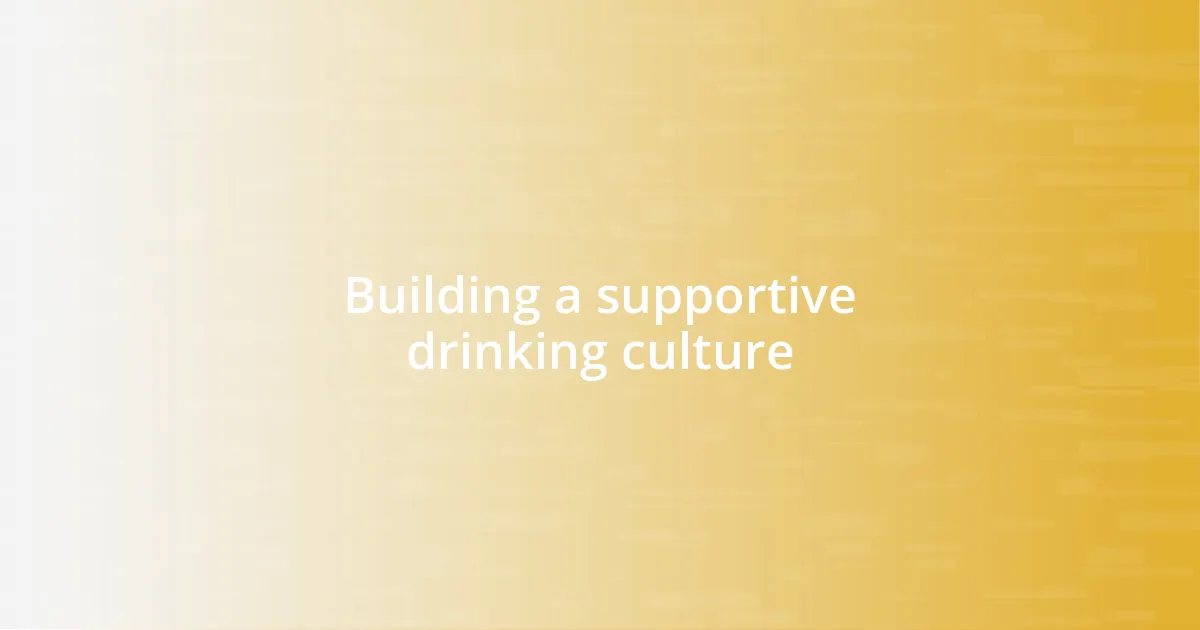
Building a supportive drinking culture
Creating a supportive drinking culture can profoundly influence our social interactions. I recall a friend’s birthday gathering where, ingrained in the party atmosphere, everyone encouraged each other to share their reasons for wanting to drink less or explore alternatives. It transformed the event into an open dialogue, making everyone feel more connected and understood. Have you ever noticed how vulnerability in sharing personal choices can strengthen relationships?
I also believe that fostering a non-judgmental environment plays a fundamental role in this cultural shift. One evening, while out with friends, someone suggested a toast—but instead of raising a glass of wine, they raised a sparkling soda. The laughter that followed broke the ice, reinforcing that it’s perfectly normal to have fun without alcohol. Have you experienced how a small change like this can flip a social expectation on its head?
Encouraging hosts to consider inclusive drink options can make all the difference in building this culture. During a small gathering I hosted, I made an effort to have a range of non-alcoholic drinks available. When my guests discovered the options, it sparked creativity and conversation about their favorite alcohol-free drinks, creating an atmosphere of exploration rather than limitation. Isn’t it powerful how simple gestures can create a more inviting and open environment for everyone?
